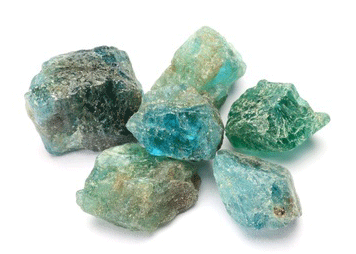Apatite Gemstone: Chameleon of the Gem World
 As far as minerals are concerned, have a nebulous, often misunderstood nature. Frequently mistaken for such minerals as amblygonite, andalusite, brazilianite, beryl, sphene, topaz, olivine, peridot, and tourmaline, gem-quality apatite manifests in a variety of colors from green and blue, to yellow, purple, and even brown. For this reason, it was given a name based on the Greek word apatein, which means to deceive or mislead. A rather unfair name for a mineral of such importance in the natural and human world.
As far as minerals are concerned, have a nebulous, often misunderstood nature. Frequently mistaken for such minerals as amblygonite, andalusite, brazilianite, beryl, sphene, topaz, olivine, peridot, and tourmaline, gem-quality apatite manifests in a variety of colors from green and blue, to yellow, purple, and even brown. For this reason, it was given a name based on the Greek word apatein, which means to deceive or mislead. A rather unfair name for a mineral of such importance in the natural and human world.
Apatite, in its use as a gemstone, has a relatively short history, which only adds to its air of mystery and mutability. It exists in three forms in nature, hydroxylapetite, fluorapetite, and chloroapetite. In fact, it has existed with us all along, hidden in the enamel of our teeth and in our very bones. It is also a phosphate mineral used in agricultural fertilizers.
Because Apatite helps plants to turn light into food and is produced by the human body, it is believed to have healing properties, especially in regard to bones, teeth, and joints. It is also said to have an emotionally healing energy that "increases motivation" and "helps overcome self-consciousness and alienation." It seems fitting then that a gemstone of such diverse form, use, and coloration should finally be redeemed from its misleading name, polished and admired for its true nature. Apatite is not deceptive at all, it is merely many things at once, and like the people who choose to wear such an unusual gemstone, it is complex and nuanced.
For more information about custom-made Apatite, jewelry contact us today.
Photo Credit:

